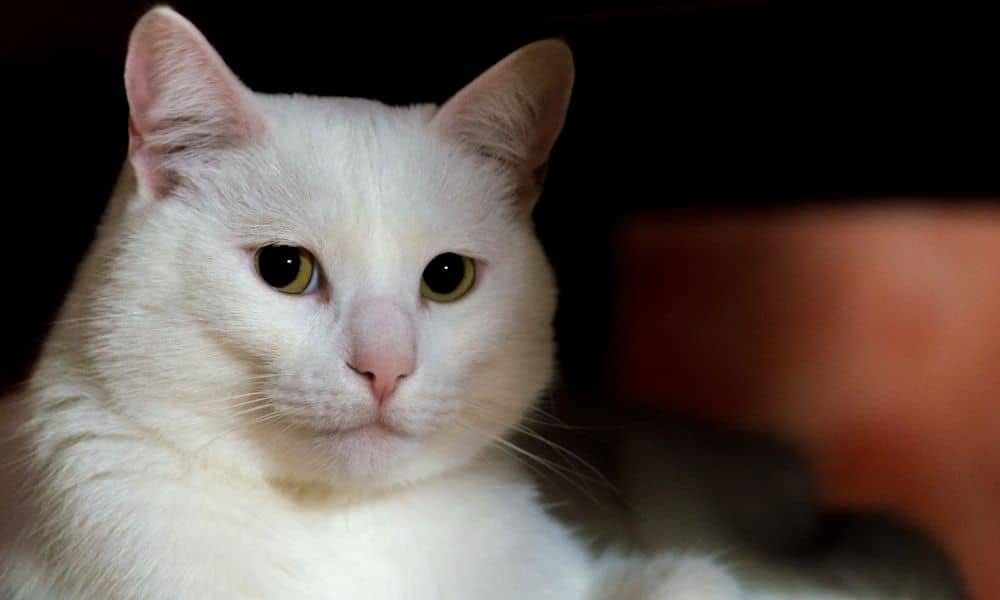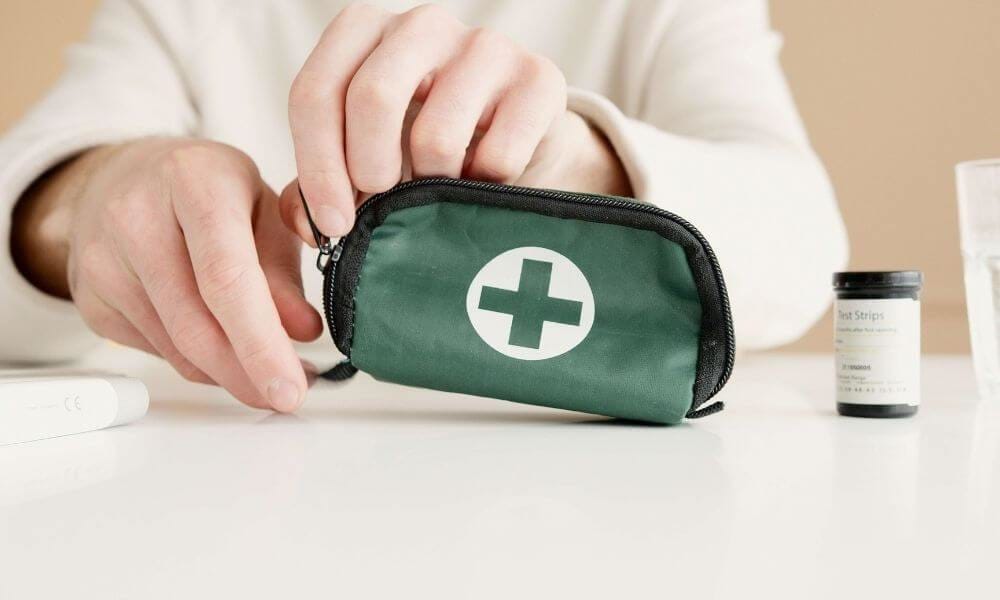Neutering is often considered the only effective way to reduce the number of unwanted cats. Cats are prolific breeders and their offspring must be quickly sterilized or the population will quickly spiral out of control.
In fact, a single female cat can be responsible for 20,000 offspring in just five years! Although sterilization is widely practiced in France, there are still thousands of unwanted cats and kittens in associations like the SPA who need a home.
Feline reproduction

Female cats can become sexually mature as early as four months old. If female cats are not spayed, they have regular heat cycles and are restless, calling and whining, squirming, rubbing, and showing their bottoms in an attempt to attract a mate.
These periods of reproductive activity lasting a few days repeat every few weeks during the breeding season, which generally runs from February to August. During these heat cycles, a female cat is very attractive to unspayed males who can detect her scent from miles away and will go to great lengths to reach her.

Female cats are not selective in their choice of mate and will accept advances from any male, including parents. If an unspayed female is allowed to spend time unsupervised outdoors - or indoors with an unspayed male - she inevitably risks becoming pregnant and contracting infectious diseases including unsterilized stray males may be carriers.
Contrary to popular belief, there are no health or welfare benefits to allowing a female cat to have a litter of kittens before being spayed and providing proper care can be costly and time consuming .
Gestation and care of the pregnant cat

Gestation lasts approximately 63-65 days, or approximately nine weeks.
Heat cycles usually stop after mating when a cat becomes pregnant, although sometimes they continue. If mating occurs again during pregnancy, this can lead to the conception of other fetuses and the birth of kittens from different fathers in the same litter!
The veterinarian can diagnose a pregnancy by abdominal palpation from three or four weeks or by ultrasound.
Changes in behavior may be observed during the last week of gestation: female cats may appear to be searching for a suitable place to give birth.
Ideally, pregnant cats should be placed in a quiet, clean, warm place, away from family and other pets, at least two weeks before the due date. Provide warm blankets and clean sheets that can be washed and replaced if necessary.

The cat will need to eat more than usual, especially during the last three or four weeks of gestation, when she needs about 25% more food. Give him kitten food as regular meals. This diet should continue throughout lactation until the kittens are weaned.
Female cats use more than double their normal energy needs when nursing kittens. Pregnant, pregnant and lactating cats must have access to plenty of water. Please note, during and after birth, water must be out of reach of kittens to prevent them from drowning.

It is advisable to seek the advice of a veterinarian before allowing your cat to breed. It is important to discuss breeding suitability and vaccination. If your cat is already pregnant, seek advice on specific care for your cat , including feeding, deworming and treating for fleas. Be sure to use treatments that are safe for pregnancy.
Abortion can be performed. You can discuss the sterilization of your cat following an unwanted mating or when there are significant risks to the health of the cat and/or kittens.
Birth and delivery

The secret to being a good midwife to your cat is observation and timing. It is best to watch the cat quietly, from a distance, taking care not to disturb her or make her anxious. Contact a veterinarian if there is a problem. Birth, also called whelping , is divided into three stages, and the second and third stages are repeated for each kitten. Please note that this article offers some advice, but does not replace specific advice from your veterinarian.
First phase
Lasts up to 36 hours and is generally shorter in cats who have already had kittens.
- there are intermittent contractions, but NO effort is observed
- the cat is agitated but most often stays in bed
- towards the end of the first instar, we can observe scratching of the litter and panting
- vaginal discharge is rare.

Second stage
Lasts 5 to 30 minutes for each kitten:
- contractions are stronger
- the fetal membranes - the bag of water - appear briefly at the vulva and burst. The fluid is usually discharged through the pussy
- active effort begins and the kitten usually comes out head first - once the head is out, one or two efforts from the cat should expel the kitten
- the mother breaks the bag, chews the cord and licks the kitten - this cleans it and encourages it to start breathing.
Third step
passage of membranes and dark flesh mass of placenta or afterbirth:
- This stage is usually immediate, although sometimes two kittens are born with two sets of membranes.
- try counting the number of placentas to make sure one is passed for each kitten. If all the placentas are not evacuated within four to six hours, a veterinarian should be consulted. Remember that the female cat usually eats the placenta to hide evidence of birth and protect her offspring.
- red-brown vaginal discharge can be observed up to three weeks after birth. It is abnormal for them to be green or foul-smelling, although there may normally be a small amount of greenish discharge after the kitten or placenta.
The time between giving birth to kittens is usually 10 to 60 minutes and steps two and three are repeated. Birth is usually completed within six hours of the start of the second stage, but can last up to 12 hours.

A litter consists of one to nine kittens, most often four to six. The first female cats usually have a small litter. Once the birth is complete, the mother settles down and allows the kittens to feed.
Prepare clean towels, a hot water bottle, bottle or syringe and cat milk replacer in advance – not cow's or goat's milk. If all goes well, leave the cat alone, but make sure she has access to food and water, as well as a litter box, without risking the kittens getting stuck or drown.
What can happen during birth?

In most cases, the cat manages without help, with kittens born 5 to 30 minutes after the cat begins to exert herself. Discreet and quiet observation is ideal. However, difficult births can happen and here are some tips to help you:
- if you have any doubts, consult a veterinarian
- if you see a kitten partially out , but the mother is very tired and the kitten is not out after a few seconds, you can try to take it out gently by pulling downwards with clean hands, but be careful very gentle and seek advice from a veterinarian.
- if the mother does not clean the kitten , you can quickly and quietly remove the membranes from its head with clean, soft absorbent paper. Wipe his nose and open his mouth to release it. Rub the kitten in small circular motions to make it breathe.
- if the mother does not bite into the cord , you can tie it twice with clean sewing thread about 3 cm from the kitten's body and gently tear between the two ties. It is essential to have clean hands
- If you have had to intervene , it is best to immediately seek the advice of a veterinarian, as kittens are more likely to be infected or to be suffocated, i.e. to be injured or rejected and not to be breastfed or kept warm by the mother.

The owner should call the veterinarian for advice during birth:
- if the first phase lasts more than 24 hours without any sign of effort.
- if the cat has been stretching for more than 30 minutes without producing anything , as this could indicate an obstruction, for example a very large kitten
- if the first kitten has arrived and no other kittens appear after an hour
- if the cat suddenly seems weak
- if there is excessive blood flow or greenish discharge without a kitten. However, there may be a greenish discharge after the kitten or with the placenta.
- if a kitten is stuck midway and cannot be delivered by gentle traction.
In some cases, a cesarean section may be necessary to deliver the kittens.

What you can do after birth
Heat is very important because newborn kittens lose heat very quickly. If the mother is attentive, she will clean them and use her own body heat to keep the kittens warm. If she is very tired or upset, she may ignore them, in which case heat should be provided, using a heating pad or covered hot water bottle - no warmer than body temperature - and covered kittens with a light towel or blanket.

Keep the room temperature high and the bedding clean and dry. Kittens should begin suckling from their mothers almost immediately. If they haven't started after half an hour, gently guide them towards the udders. If they do not start nursing, consult your veterinarian and you may need to start giving the kitten a milk replacer - follow the instructions carefully. Remember that newborn kittens cannot go more than a few hours without milk.
If the cat is calm and collected, you can quickly and silently check on each kitten. Ask your veterinarian for advice if you have any concerns.
Possible complications for the mother

The cat must be closely monitored after birth. A veterinarian's advice should be sought if problems are noted.
It may be
- bleeding from the vagina or unusual vaginal discharge
- disturbed behavior - normally, female cats spend most of their time with the litter for at least two weeks and are usually very calm after birth. However, some cats may exhibit disturbed behavior.
- severe disturbance, constant interruptions or pain can cause the cat to kill its offspring. This risk is reduced if the mother is familiar with her environment, if the environment is calm and if she is in good health. Be very calm and quiet and do not disturb a mother with very young kittens unless necessary, and keep other pets away.

- if the cat seems to reject one of her kittens , giving her a little birthing fluid can help her accept it
- if the cat does not feel comfortable in her environment and feels that she or the kittens are threatened, she may try to move the kittens in her mouth to a preferred location. It is important to ensure that the cat has access to a warm, clean and quiet place. She might appreciate a cardboard box lined with blankets and soft sheets to hide the kittens in.
- ignore the kittens
- Mastitis : infection of a mammary gland, which becomes hot, painful and enlarged. The cat may have an abnormal color
- a lack of appetite and/or vomiting are bad signs
- clumsy movements, jerks or collapse.

As with all cats, if any unusual signs are observed, the cat should be examined by your veterinarian. If you are taking the mother to the vet, ask if you should also transport the kittens with her. If kittens must stay home during the vet visit, make sure they receive adequate care and are kept warm at all times.
Here are all our tips to ensure that your cat's gestation and birth go as smoothly as possible.
